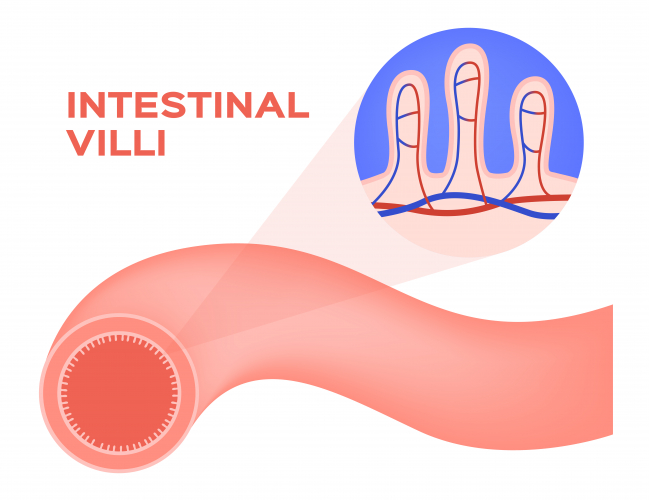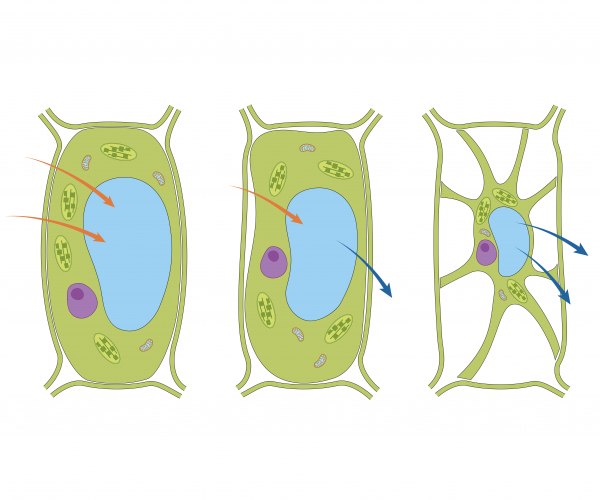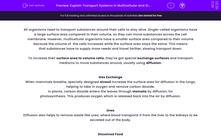All organisms need to transport substances around their cells to stay alive. Single-celled organisms have a large surface area compared to their volume, so they can move substances across the cell membrane. However, multicellular organisms have a smaller surface area compared to their volume because the volume of the cells increases while the surface area stays the same. This means that substances have to supply more needs and travel farther, slowing transport down.
To increase their surface area to volume ratio, they've got special exchange surfaces and transport mediums to move substances around, usually using diffusion.
Gas Exchange
When mammals breathe, specially designed alveoli increase the surface area for diffusion in the lungs, helping to take in oxygen and remove carbon dioxide.
In plants, carbon dioxide enters the leaves through stomata by diffusion, for photosynthesis. This produces oxygen which is released back into the air by diffusion.
Urea
Diffusion also helps to remove waste like urea, where blood transports it from the liver to the kidneys to be excreted out of the body.
Dissolved Food

Food is broken down in the digestive system into dissolved food molecules. These diffuse into the bloodstream using microvilli, which help to increase the gut's surface area for absorption.
Water transport via osmosis

Osmosis is particular to the diffusion of water.
When plant cells are placed in a high concentration of water, they take water in and become turgid and the only thing that stops them bursting is their strong cell walls.
But if plant cells are placed in a low concentration of water, cells release water and they shrink away from the cell wall, becoming flaccid or plasmolysed.
Animal cells change shape during osmosis as they don't have cell walls - for instance, red blood cells will expand or shrivel up.
Active transport of mineral ions
In plants, the uptake of mineral ions by root hair cells uses active transport to pull them from a low concentration in the soil, into the already highly saturated cells. This goes against the concentration gradient and therefore needs energy from respiration.
There's a lot to remember in this topic, so have another read through this Introduction to make sure you've got it, before moving on to some questions.








